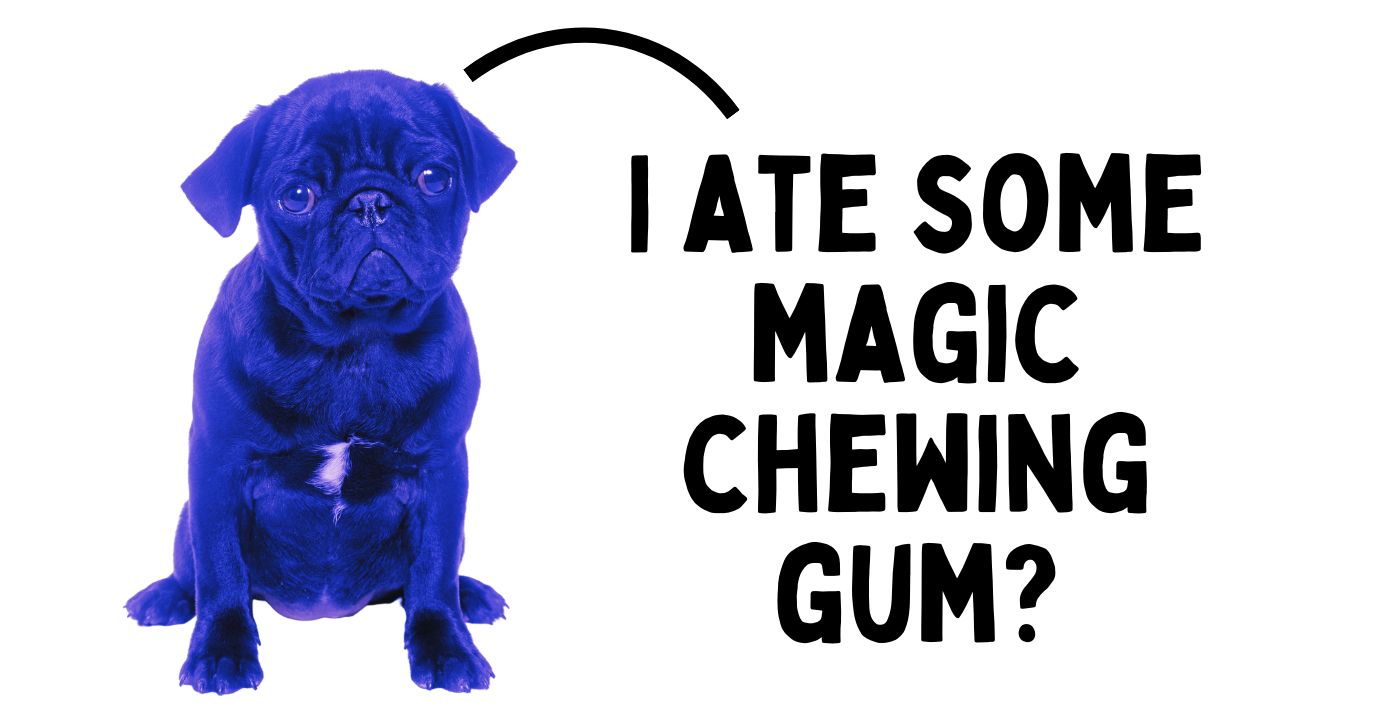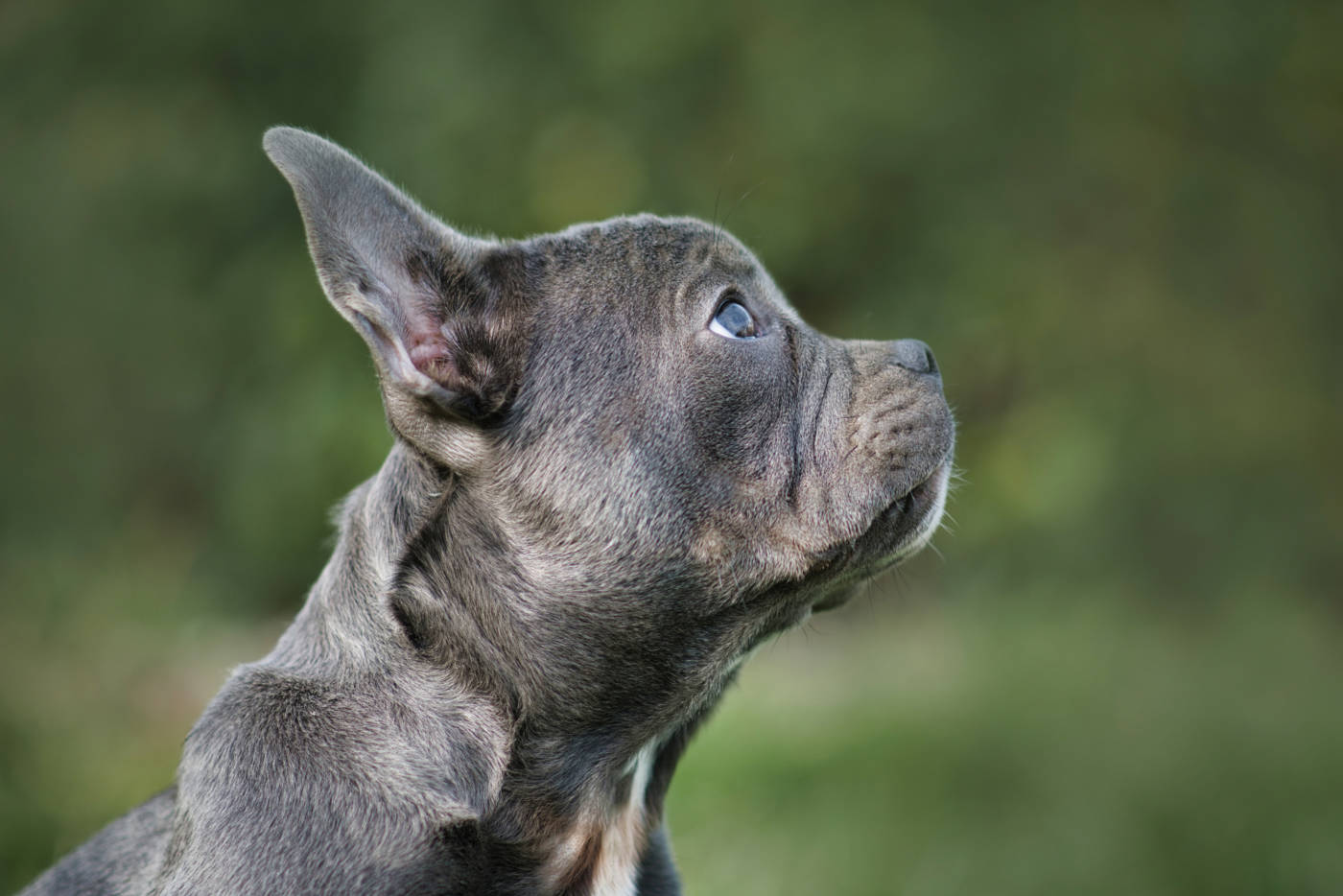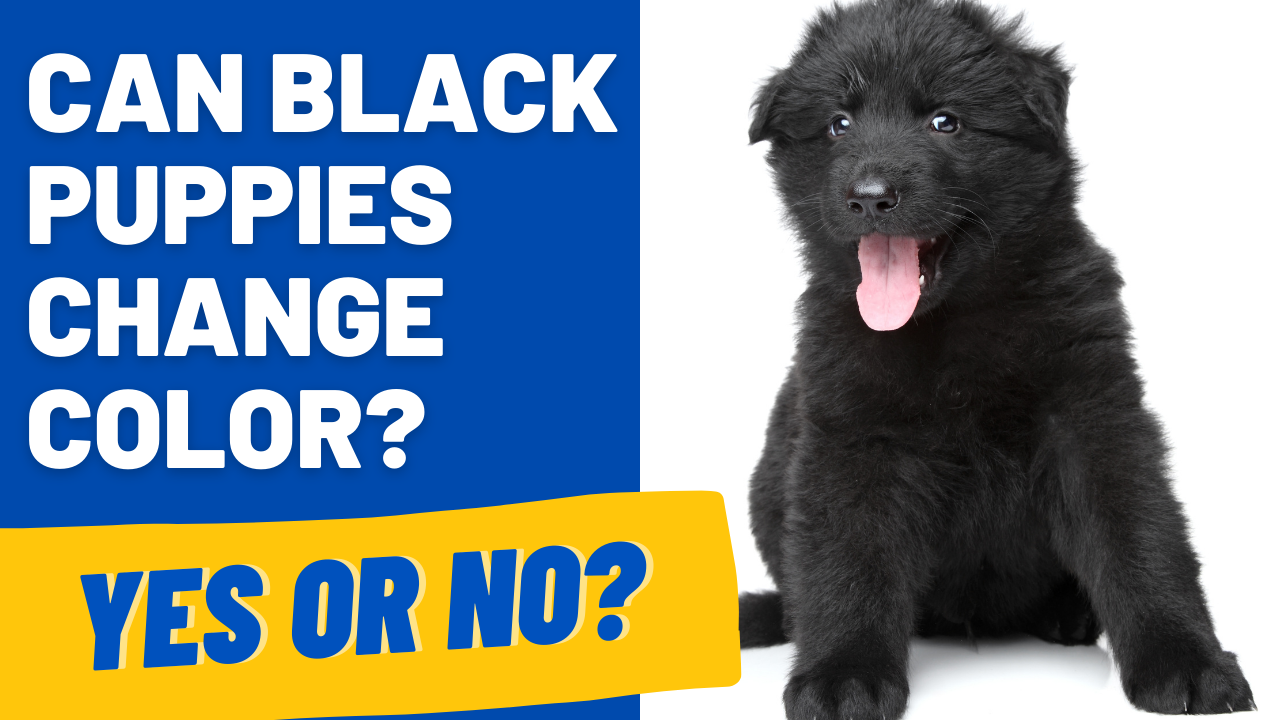Puppies that are born black can definitely change to other colors as they grow older, depending on their coat genetics. Not all puppies will change colors, but certain breeds (or mixes of those breeds) will have genetics that causes their adult coat to appear different than their puppy coat.
Do black puppies change color?
Not all black puppies will change color, but some of them will! If you know your dog’s breed, that’s the best place to start when considering if your puppy’s genetics will lead to them changing color in the future.
In most cases, puppies that are born black and change color in the future will be a gray or “blue” color. Your black puppy won’t end up with a red merle color and pattern, but less drastic color changes often occur with age.
There are a few breeds that have more drastic color changes, namely the Soft Coated Wheaten Terrier. Dogs of this breed are born a very dark brown/black color, and over their first year of life, their coat will change to a light, golden, “wheat” color – hence their name!

Do black puppies get lighter?
When a black puppy changes colors, it’s much more likely that they become lighter with age, rather than their coat faded to a light brown like the Soft Coated Wheaten Terrier. It’s not something that should be expected with all black puppies, but is common with certain breeds and mixes due to their genetics.
For example, Labrador Retriever puppies that are born black will stay black as adults. Black, yellow, and chocolate are the 3 colors they come in, and the genetics of their coloring don’t allow a black puppy to change to chocolate or yellow.
Poodles, on the other hand, may fade from black to “blue” or “silver.” If this happens, the Poodle is said to “clear” and this process of obtaining a lighter coat may not be complete until 2 years of age! Poodles may stay “true black” and have no fur that has faded to another color, too.
Can a black puppy turn gray?
One of the most common coat color changes that occurs with black puppies is for their coat to fade to a lighter version, appearing more gray than solid black. This change has multiple names, depending on the breed of dog.
Blue, gray, and silver are just some of the names for dogs that are a lightened black color, depending on the breed.
With all the different genetics at play with dog colors, and the different names for the same color across different breeds, it can sometimes be confusing to figure out what color to call your dog!

When do puppies change color?
Some puppies may start to change color by the time they’re just a couple of weeks old, but most dogs will not develop their true adult coat until they are 1-2 years of age. It takes time for a dog’s coat to grow, and time for the coat to change from the puppy coat to the adult coat.
You might have noticed before that puppies often have texture changes in their coat as they age, even if their coat doesn’t change color. This is normal for many dogs across a variety of coat types, as they shed their “puppy coat” and grow the type of coat they will have as an adult.
It’s during this time that puppies often change colors, as the adult coat contains the pigmentation that is closer to their true adult color.
Sometimes this process appears dramatic when dogs grow a coat that needs to be clipped and cut rather than a coat that sheds out. While the outside of the dog’s coat may still have been the same color as when they were a puppy, the newer hair growth underneath may have been undergoing quite the change in color.
How to tell what color your puppy will be
The best way to predict your puppy’s color is to know their genetics. In some breeds, genetics can be assumed based on the dog’s looks, or their phenotype. In other breeds, there are so many color genetics at play that may “hide” the underlying genetics, that genetic testing is required to find out the possibilities.
It gets even more complicated when you consider that multiple genes affect each other, and it’s not as simple as if a dog has gene Z or gene K.
Certain alleles (the versions of a gene that may occur) are dominant over others or will be expressed whether or not there are one or two copies of the gene. For example, the B locus has the alleles B and b.
Dogs, as with people and other animals, have two copies of each allele – one from each parent.
With the B allele being dominant over the b allele, a dog that has one or two copies of B – either BB or Bb – will be black. A dog that has two copies of the recessive allele, and is bb, will be brown.
Let’s look at that in a punnett square example! In this example, both parents have the alleles Bb, meaning they appear black, but carry a copy of the recessive allele for brown.
| Dad’s Genetics | |||
| B | b | ||
| Mom’s Genetics |
B | BB | Bb |
| b | Bb | bb | |
If we ignore any other genes at play for the moment, we can guess what colors the puppies will be from this pairing. While both parents are black, there is the possibility they can produce a brown (bb) puppy if the puppy receives the b allele from each parent.
Any other combination of alleles results in BB or Bb and the puppy will appear black, like their parents.
There are a lot of possibilities for color combinations in dogs, with “hidden” colors that can occur if genetic testing isn’t done. There’s far more genetics at play than we can cover in this article alone, but for more information, you can look at these resources from Embark, VCA Hospitals, and Animal Genetics.
Some websites, such as Paw Print Genetics, even offer a coat color calculator where you can input the genetics of the parents and see the possible outcomes for puppies!
Without knowing the genetics or breed of your puppy, it’s often a wait-and-see game to see if their coat changes color from black or not.
What is black brindle?
Dogs that are described as “black brindle” are dogs that have a brindle pattern that is barely noticeable due to the dark coloring of the dog. In a lot of dogs, brindle is fairly obvious black striping across a tan or red base coat, rather than a dark coat.
However, in some dogs, the black striping occurs over a lot of the dog’s body, giving it the appearance of there being lighter stripes across a black base coat. This is the case for Boxers that appear black – genetically, they don’t have a solid black coat, but they do have genetics for brindling and the brindle stripes are just so close together they appear black.
The genetics for brindle are not completely understood, so testing for brindle is often unavailable.
What is black Merle?
Dogs that are genetically black with merle are often called blue merle, due to the lighter color that results from the merle gene. Merle patterns are seemingly random patches of different shades of colors on a dog, rather than a solid color, and they may be with or without white.
The merle gene is a dilution gene that causes patches of a dog’s coat to appear faded – either black with “blue” faded sections, or brown with a lighter red or tan in the faded sections.
The specifics of the merle gene determine how much of the dog may be subject to this patchiness, so some dogs may have more solid black than others.




